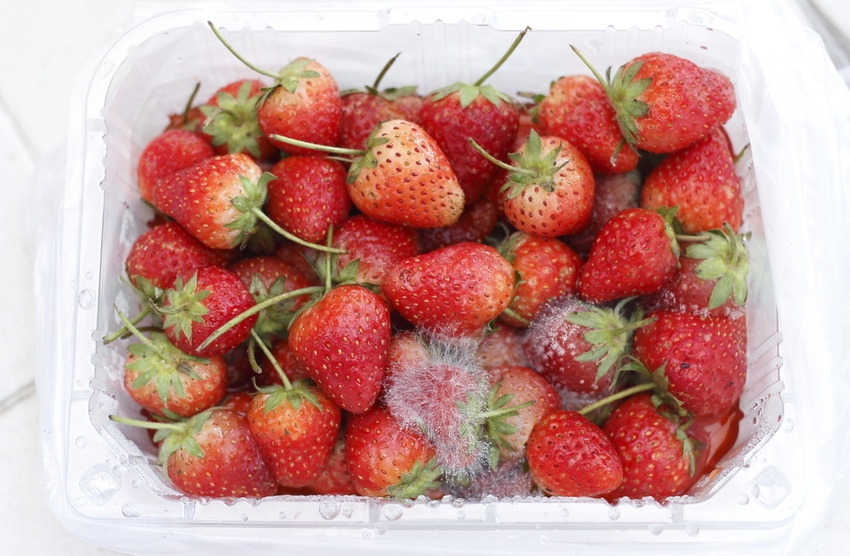Spoiler alert: Packaging helps reduce No.1 source of food waste
November 1, 2017

The National Resources Defense Council recently reported that much, if not most, food waste is fresh food purchased for home use. According to the U.S. Department of Agriculture, American families throw away up to 40% of the fresh fish, meat and poultry; 51% of the dairy products and fruits; and 44% of the vegetables they purchase.
While there are many reasons for household food waste in the developed world, one factor accounts for about two-thirds of the problem: spoilage from food not being used on time. For reference, the 33% of food waste not due to spoilage is due to cooking or serving more than can be eaten during a meal. (Source: WRAP)
There is plenty of other third-party research that supports this finding:
• When it comes to alleviating spoilage and other forms of food waste, packaging is so critical that Helén Williams and Fredrik Wikström, life-cycle assessment researchers at Karlstad University in Sweden, state that, “Packaging that is altered in order to reduce food losses can lessen the total environmental impact and lead to large environmental gains, even if it is necessary to increase the environmental impact from the packaging itself.” (Source: Journal of Cleaner Production, 2011)
• According to the Freakonomics article “How About Them Wrapped Apples,” “Given the high cost of wasting food, the question of [packaging] design might be more important than the question of necessity. Waste is an inevitable outcome of production. As consumers, we should certainly see food packaging as a form of waste and seek increasingly responsible packaging solutions. At the same time, though, we must do so without resorting to pat calls to ‘reduce packaging.’ Doing so, it seems, could do more harm than good.”
• You might also take a look at “Why Spoiled Leftovers Are Worse for the Environment Than Plastic,” from OrganicLife, published by the experts in organic gardening, Rodale Press. As the article states, “Letting stuff in the fridge go straight into the garbage is a big problem.”
• Esteemed Garbologist Dr. William Rathje wrote in the March-April 1996 edition of The ULS Report that, “There are several specific behavior patterns which are associated with high rates of food waste. Most are obvious. It should come as no surprise, for example, that fresh produce is wasted at ten times or more the rate of processed fruits and vegetables, and foods that are used frequently (such as the slices from standard loaves of bread) find themselves in the trash much less often than foods which are used only sporadically (e.g., hot dog buns or muffins).”
The packaging industry must seize this opportunity to take the lead in reducing at-home food waste. According to Ron Cotterman, vp, sustainability for Sealed Air, and treasurer for AMERIPEN, we must:
•Foster and promote current benefits that optimize the packaging of fresh foods.
•Identify and promote packaging solutions that remediate food waste generation behaviors, and then develop the technical paths/innovations that deliver the expected benefits.
Cotterman also points out that, “The industry should advance initiatives aimed at increasing overall recovery of packaging materials. This is the cost of entry into the consumer mindset that will allow the public to listen to, understand and appreciate the multiple ways in which packaging conserves valuable resources.”
He’s right. But also of critical importance is the fact that consumers’ behaviors regarding food waste will only change if they perceive a real benefit to doing so, and if the cost of change as measured in time and/or money is minimal.
Thus, innovations that enhance convenience by facilitating food storage, retrieval, preparation and use of leftovers should be at the top of all packaging designers’ to-do lists.

Robert (Bob) Lilienfeld has been involved with sustainable packaging for more than 20 years. He is currently editor and publisher of The ULS (Use Less Stuff) Report, a marketing and communications consultant and a professional photographer.
********************************************************************
MinnPack 2017 (Nov. 8-9; Minneapolis) celebrates its 15th year to bring you the latest developments in sustainability and all things packaging as part of a comprehensive advanced manufacturing event. Register now!
About the Author(s)
You May Also Like




